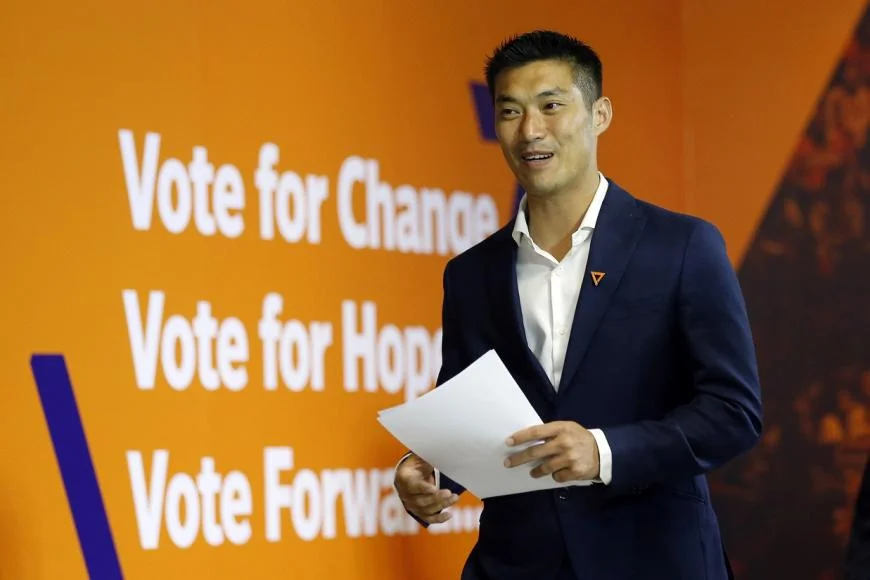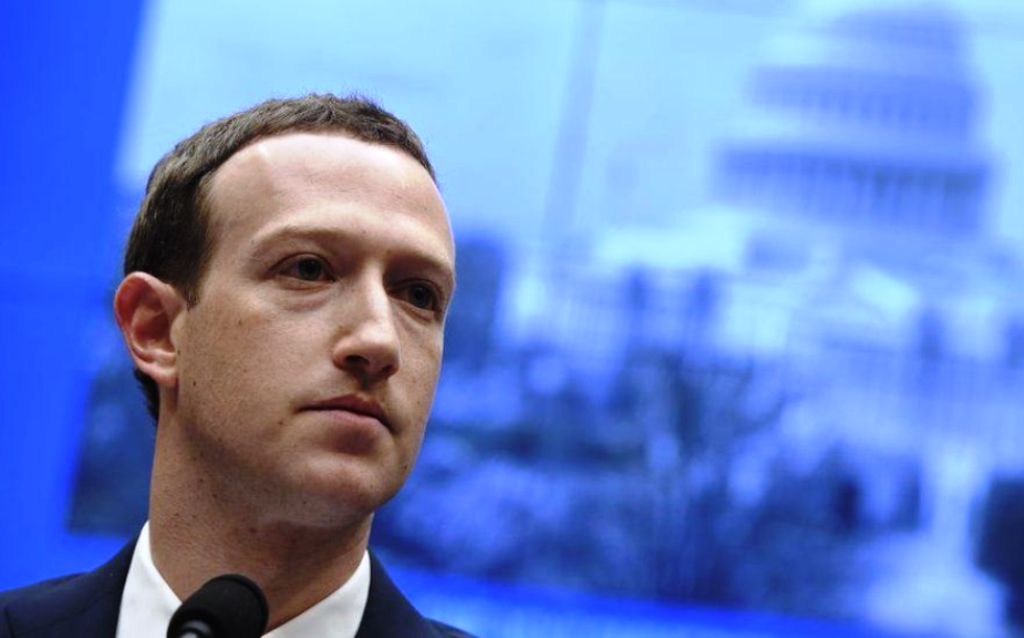Business
Will Trump’s 2025 Economic Policies Save America from Recession

WASHINGTON, D.C. – With the global economy on shaky ground, President Donald J. Trump’s second-term economic plan reads less like a standard policy outline and more like a bold bet on American strength. The Federal Reserve now expects US growth of just 1 percent in the second half of 2025, down from the 3.5 percent average during the Biden years.
In that setting, Mr. Trump’s mix of broad tariffs, permanent tax cuts, and strict immigration rules is praised by conservatives as the key to avoiding a deep recession. But as markets swing, and consumer confidence falls to its weakest level since the 2022 inflation surge, the big unknown remains: is this a recovery in the making, or a risky roll of the dice?
Trump Tariffs at Center Stage
Mr. Trump’s main economic tool is a flat 10 percent tariff on all imports, rising to 20 percent on rival nations such as China. The move helped trigger an 8 percent drop in the S&P 500 in April, followed by a rebound as talk of carve-outs and exemptions spread.
Supporters point to a recent Federal Reserve Bank study that looks at 150 years of US and European data. They say it shows that higher tariffs tend to cool demand, and that a 4 percent increase in tariffs can cut inflation by about 2 percentage points in the short run while lifting unemployment by only 1 percentage point.
Treasury Secretary Scott Bessent, a former hedge fund chief, argues the new tariff plan is not a blunt barrier but a flexible ceiling that Washington can adjust in talks. He claims it has already pushed companies to commit about $4 trillion in US-based projects, as large tech and energy firms plan new plants and reshored production.
Skeptics see a very different picture. Goldman Sachs economists, who now put recession odds at 35 percent, describe the policy as a “wrecking ball” for global supply chains. Their models suggest the economy could be 1.3 percent smaller by 2028 if the tariff structure stays in place without major changes.
Conservatives, though, see early results as proof of concept. The One Big, Beautiful Bill Act, which made the 2017 tax cuts permanent and trimmed the corporate tax rate to 15 percent, is credited with lifting second-quarter GDP growth to 3.8 percent, above pre-inauguration estimates.
“This isn’t disorder, it’s controlled combustion,” says Kevin Hassett, director of the White House National Economic Council. He predicts diesel prices will fall below $2 a gallon by mid-2026, helped by restarting the Keystone pipeline and opening drilling in the Arctic National Wildlife Refuge (ANWR).
Golden Boom, or a Hard Fall
The Trump team says the plan may not just prevent a slump, but could launch a strong expansion. Forecasts from inside the administration describe a sharp upswing over the next two years.
By the fourth quarter of 2026, Hassett expects unemployment to settle near 4 percent, with consumer spending up 5 percent from a year earlier. He also projects that the trade deficit will shrink by half, to about $600 billion, thanks to what the White House calls “reciprocal” trade deals with the EU and ASEAN.
Some Wall Street optimists go further. Analysts at Fundstrat anticipate a sharp V-shaped rally in stocks, with the Dow climbing past 50,000 as deregulation helps unlock around $1 trillion in delayed corporate capital spending.
The downside risks are just as dramatic. Pantheon Macroeconomics warns that the tariff shock could push the economy toward a “stagflation trap,” where growth slows while prices keep rising. Their research suggests tariffs could raise core goods inflation by about 1.9 percent, while policy uncertainty and stop-start governance, highlighted by the 43-day government shutdown, could cut half a point from fourth-quarter growth.
If trade tensions with Beijing worsen, JPMorgan estimates the chance of a recession could reach 40 percent by next summer, with household incomes stuck near 2024 levels in real terms.
“We’re betting the farm on American grit,” says a Republican aide on Capitol Hill. “If the bet goes bad, we’re talking breadlines by 2027.”
Conservative Push to Tighten Immigration
Among conservatives, no part of Trump’s agenda stirs stronger support than his immigration crackdown, which they frame as a matter of public finances, not race.
Since January, illegal crossings have reportedly dropped 90 percent, with monthly apprehensions down to about 8,000. The administration credits a series of executive orders that declared a border emergency, brought back the “Remain in Mexico” policy, and ended catch-and-release practices. These actions have cut asylum case backlogs by around 40 percent.
The Laken Riley Act, which requires the detention of migrant felons, has led to 1.5 million deportations since Trump returned to office, according to ICE figures. Supporters argue this has freed about $16 billion a year in welfare and emergency Medicaid spending that had supported undocumented households.
Think tanks on the right call this the purest form of America First policy, a barrier against what the Federation for American Immigration Reform estimates as a $182 billion yearly cost to taxpayers from illegal immigration.
“Open borders aren’t compassion, they’re economic sabotage,” says Simon Hankinson, a senior fellow at the Heritage Foundation. He credits the tougher stance with lifting wages for native-born workers by about 2.5 percent in border states.
Key figures behind Project 2025, such as Ken Cuccinelli, argue for an even firmer line, including more military help with border patrols and ending so-called “sensitive zones” that limit immigration enforcement in schools, churches, and hospitals. The administration has already moved in this direction, with National Guard troops now stationed along key stretches of the Rio Grande.
Even more moderate Republicans give their backing. A Pew survey shows 88 percent of GOP voters now support expanding the border wall, up from 79 percent in 2019, and 79 percent approve of stepped-up deportations.
Opponents highlight the human toll, pointing to roughly 700,000 people with Temporary Protected Status who could face removal. Conservative lawmakers respond that national control of borders is non-negotiable and argue that weak enforcement quietly worsens the deficit.
Fiscal Fortress or Inviting a Fall?
Economists remain deeply split over the long-term results, but right-leaning voices have grown more supportive as early data comes in.
Michael Strain of the American Enterprise Institute, who has often been cautious about Trump’s policies, agrees that tariffs can slow growth over time. Even so, he says they have created a short-term “sugar high” in domestic investment.
“Lower immigration shrinks the labor pool, yes, but when you match that with tax breaks for new plants and equipment, you can get higher productivity instead of wage cuts,” he argues.
Joseph Brusuelas of RSM US offers a warning of his own. Without quick and broad tariff exemptions for key imports, he says, the first quarter of 2026 could see output contract by about 2.4 percent, based on Atlanta Fed nowcasts.
Yet he also points to early signs of fiscal improvement. “This administration’s volatility is its advantage,” he says. “Firms adjust, spend more at home, and the deficit has already fallen to about $1.7 trillion, compared with fears of $2.5 trillion.”
For die-hard America First supporters, this is a live contest, not a dry policy debate. Traders are watching for changes to H-1B visas to keep some skilled workers coming in, while manufacturers pin their hopes on a new push for nuclear power and heavy industry.
“The fight is fiscal: back the tariffs, build the walls, or watch deficits eat the American dream,” Hassett wrote in a recent CNBC piece.
According to reporting from the Wall Street Journal, Mr. Trump has told advisers he expects “pain,” but not catastrophe. “Recession? Maybe. Depression? Never,” he reportedly said in private.
In his view, economic rescue demands bold moves and a hard stomach for risk. For now, the United States is all-in on that bet.
Related News:
Historian Victor Davis Hanson Talks on Trump’s Vision for a Safer America
Business
New Sanctions on Russia and Their Impact on Global Trade, Markets
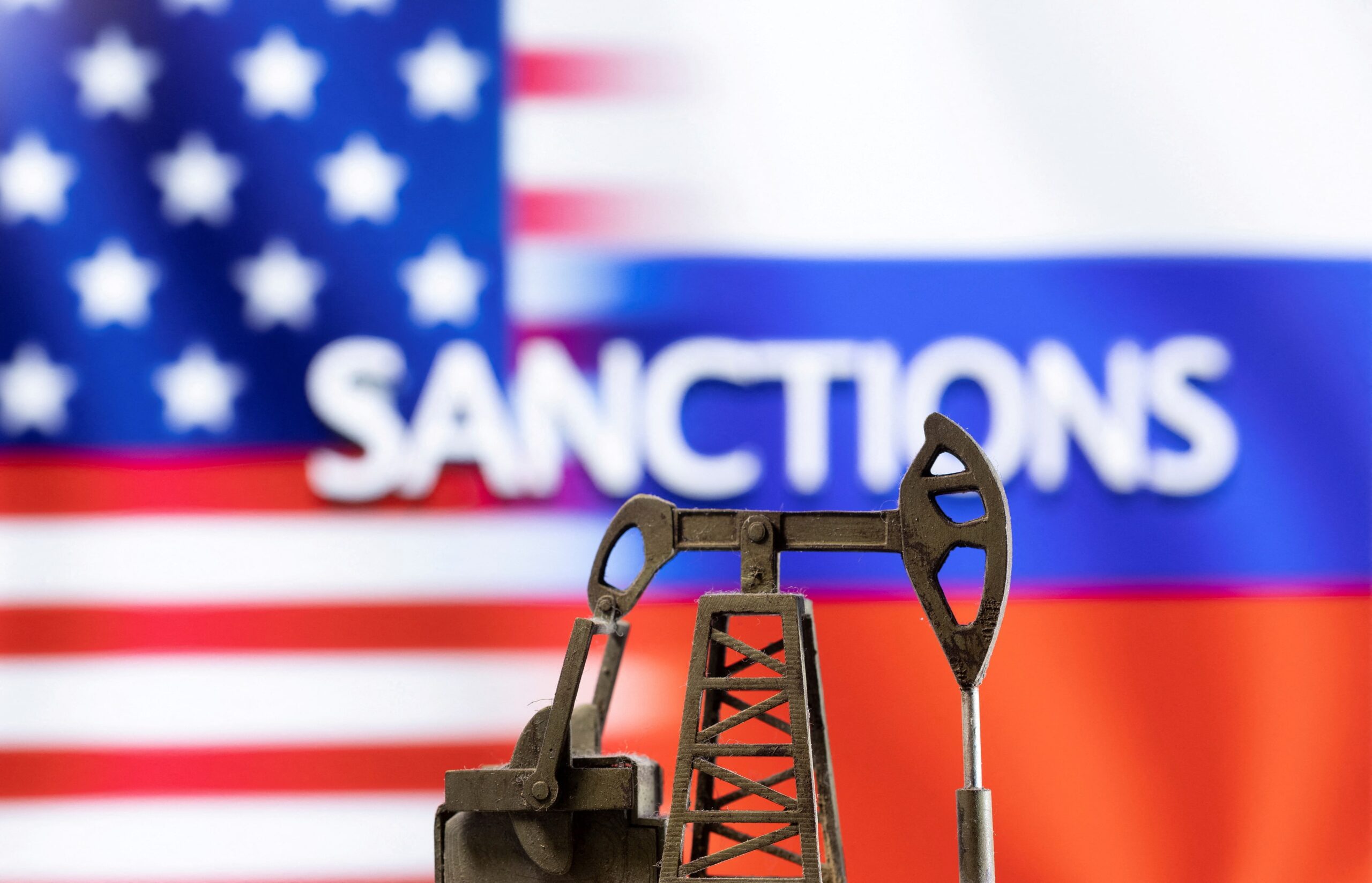
Sanctions used to be a topic for diplomats and policy experts. Today, they affect gas bills, food prices, and even mortgage rates. The latest rounds of new sanctions on Russia in 2024 and 2025 show this very clearly.
After Russia’s full-scale invasion of Ukraine in 2022, many countries chose sanctions instead of direct war. In 2025, the US, EU, UK, and allies pushed new packages that hit Russian energy, banks, and military-linked companies harder than before. These moves are now reshaping how countries buy energy, how ships move around the world, and how money flows through global markets. They also sit at the heart of Europe’s Energy Crisis.
The European Union’s 19th sanctions package, along with new US measures, now targets Russian oil, gas, LNG, and finance in a much deeper way. As a result, Europe is racing to find new energy suppliers, companies are rewriting trade routes, and investors are watching markets jump on every new headline.
What Are the New Sanctions on Russia and Why Do They Matter?
Sanctions are basically rules that limit or block trade and finance with a country, company, or person. They are a tool that governments use when they want to punish bad behavior, but do not want a direct military fight.
In late 2025, the EU adopted its 19th package of sanctions against Russia. It is the toughest so far. Official EU statements explain that this package targets Russian energy exports, including liquefied natural gas (LNG), as well as banks, crypto services, and companies in other countries that help Russia’s war effort. You can see this described in more detail in the EU’s announcement on the 19th package of sanctions against Russia.
At the same time, the US and UK increased pressure on Russian oil majors and financial channels that still help Russia earn foreign currency and buy imported goods.
Why does this matter for regular people? Because Russia is a major exporter of oil, gas, LNG, metals, and grain. When those flows are restricted or rerouted, prices and supplies change, often far from the war itself. That change feeds into global trade, stock markets, and day-to-day costs for households.
Simple Explanation of Sanctions and How They Work
Think of sanctions as strict rules for doing business. Governments tell banks and companies: “You cannot deal with that person, that company, or that country, at least not in certain areas.”
Some common types of sanctions are:
- Trade bans: For example, no importing Russian oil or LNG into the EU.
- Financial blocks: Cutting Russian banks off from global payment systems.
- Export controls: Limiting high-tech gear, machinery, or chemicals that can be used for weapons.
- Asset freezes and travel bans: Blocking the money and movement of certain people.
Here is a simple example. If a Russian oil company is on a sanctions list, a European bank may not be allowed to process its payments. So the company cannot easily get paid in euros or dollars. That makes it harder for Russia to sell energy and to fund its war.
The official goal of these tools is to pressure leaders and the war economy, not to punish ordinary people. In real life, though, regular people often feel the side effects, like higher fuel or food prices.
Key New Measures in 2025: Energy, Finance, and Military Trade
The 19th EU package is a big step up. According to EU and news reports, including finance-focused coverage of the 19th sanctions package and Reuters reporting on the LNG ban and ship list, the latest measures include:
Energy
- A full ban on Russian LNG imports into the EU, with phase-out periods for existing contracts.
- Tighter limits on Russian oil, including exports linked to big companies like Rosneft and Gazprom Neft.
- A crackdown on Russia’s “shadow fleet”, with over 500 ships listed for trying to hide the origin of oil or dodge price caps.
Finance
- EU firms will be banned from using Russian financial messaging systems such as SPFS, SBP, and Mir, starting in early 2026.
- New sanctions on crypto exchanges and services that help Russia move money outside the regular banking system.
- More Russian banks added to EU and US sanctions lists.
Military and war economy
- Extra export bans on items that can support Russia’s military industry, such as certain metals, electronics, and construction materials.
- Dozens of new individuals and companies linked to the war or to sanctions evasion added to sanction lists.
- Companies in third countries, including parts of Asia and the Middle East, targeted if they help Russia dodge rules.
Legal and compliance experts have summarized how broad this 19th package is, for example in analyses like Skadden’s overview of the EU sanctions update and Rimon Law’s summary of new export restrictions.
How These Sanctions Are Different From Earlier Ones
Right after the 2022 invasion, sanctions focused on some banks, elites, and high-tech exports. Many energy flows, especially gas, were left partly open. Europe still depended on Russian pipeline gas and some oil.
As the war dragged on, the logic changed. The newest measures:
- Hit core energy exports harder
Earlier packages left large gaps for LNG and some oil routes. The 19th EU package moves toward a total LNG ban and closes many of those gaps. - Widen the target list
More banks, more companies, more ships, more individuals. Sanctions now reach deeper into Russia’s energy system and war economy. - Push back against workarounds
The EU and US now pay closer attention to traders, banks, and shippers in third countries that help Russia bypass rules.
Because of these changes, sanctions now affect not just Russia, but the whole web of global trade, shipping, and finance that used to move Russian goods.
How New Russia Sanctions Are Shaping Global Trade Flows
When a major exporter like Russia faces new limits, trade routes bend. Ships change ports. Contracts get rewritten. Middlemen appear.
The latest sanctions affect three big areas:
- Energy trade, especially oil, gas, and LNG.
- Key raw materials, such as metals, fertilizers, and grains.
- Shipping and insurance, which act as the backbone of trade.
All of this links back to Europe’s Energy Crisis, where the loss of Russian energy has forced a huge and costly shift to new suppliers.
Energy Trade Disruptions and Europe’s Energy Crisis
Before the war, Europe relied heavily on Russian pipeline gas. When those flows dropped, Europe turned to LNG from many places, including still from Russia in the short term. The new EU LNG ban removes that last piece over time.
This is central to Europe’s Energy Crisis. Europe now needs to:
- Replace Russian pipeline gas and LNG with imports from the US, Qatar, and African producers.
- Compete with Asian buyers for the same LNG cargoes.
- Make sure storage tanks are full before each winter.
When more buyers chase the same limited gas, prices can jump. That hits:
- Households, through higher heating and electricity bills.
- Factories, through higher energy costs that cut profits or force shutdowns.
- Governments, which may spend more on subsidies or price caps.
The crisis in Europe feeds into global markets. If Europe buys more LNG from the US, that affects how much is left for other regions and what price they pay.
Shifts in Oil, Gas, and LNG Trade Routes Worldwide
Russian oil and gas do not simply vanish. They look for new homes.
Here is what is happening:
- Oil that used to go to Europe now sails to Asia, especially India and China, often on longer routes that use more ships and time.
- Russia offers discounts to buyers willing to ignore or work around Western sanctions and price caps.
- A “shadow fleet” of older tankers moves Russian oil under different flags, hidden ownership, or switched-off tracking systems.
- Europe increases LNG imports from friendly countries and signs long-term contracts to replace Russian supply.
These shifts bring higher transport costs and more complex logistics. New trading hubs and middlemen appear in places like the Middle East, the Caucasus, and parts of Asia. This extra friction often shows up as higher prices for end buyers.
Impact on Food, Metals, and Other Key Commodities
Russia and Ukraine are both major food and raw material exporters. That includes:
- Wheat and other grains.
- Fertilizers such as potash and nitrogen products.
- Metals like nickel and aluminum.
Sanctions on Russian banks, shipping, and insurance, plus the risk from war in the Black Sea region, can slow these exports or make them more expensive.
For poorer countries that import a lot of food or fertilizer, higher prices can hit hard. If fertilizer costs more, farmers may use less, which can reduce crop yields. Less supply can push food prices higher. That is how a war in Europe and sanctions on Russia can affect the price of bread or meat in faraway regions.
Even when food and fertilizers are not directly banned, the extra cost of ships, insurance, and financing still raises prices along the supply chain.
New Trade Partners and Alliances Outside the West
As Western markets close, Russia has looked for partners elsewhere. It has deepened ties with:
- BRICS countries, like China and India.
- Middle Eastern states, that seek cheap oil and gas.
- Some African and Latin American countries, that want investment or discounted fuel.
At the same time, more companies in these regions face pressure from US and EU sanctions if they help Russia buy weapons or evade rules. Some Chinese, Gulf, and other firms have already been listed for supplying sensitive goods or finance linked to the war.
This raises a bigger question: will world trade split into blocks? One block could be centered on US and EU rules, with stricter sanctions and controls. Another could trade more freely with Russia, Iran, and other sanctioned states.
For businesses, this means more uncertainty. They may need separate supply chains for different markets, and they face higher legal and reputational risks.
How Sanctions on Russia Are Moving Global Markets and Prices
Markets react to news in seconds. When governments announce new sanctions, traders quickly guess what that means for supply, demand, and risk.
For Russia sanctions, three areas move first:
- Energy prices, especially oil and gas.
- Stock markets and currencies.
- Inflation and interest rates.
These shifts affect regular people through fuel prices, grocery bills, and borrowing costs.
Oil and Gas Prices: Why Energy Costs Stay Volatile
Energy markets do not like uncertainty. Every time there is a new LNG ban, ship blacklist, or banking restriction, traders worry about tighter supply.
A simple rule helps:
- When supply shrinks and demand stays strong, prices tend to rise.
- When supply grows or demand falls, prices tend to drop.
With Russia sanctions, many traders expect some loss of supply or at least higher transport costs. That supports higher prices than before the war. At the same time, if the global economy slows, or if Europe has a mild winter with full gas storage, prices can fall back.
Because these forces push in both directions, energy prices stay jumpy. This constant up and down is a key part of Europe’s Energy Crisis, since businesses and households struggle to plan when they do not know what their bills will look like a few months ahead.
Stock Markets, Currencies, and Investor Fear
Stock markets often react strongly to big sanctions news:
- Energy company stocks can rise if investors expect higher oil and gas prices that boost profits.
- Airlines, shipping lines, and heavy industry can fall if investors fear higher fuel and raw material costs.
- Banks and insurers may drop if they face legal or credit risks from sanctions.
Currencies also move:
- Countries that export oil and gas sometimes see stronger currencies when prices rise.
- The Russian ruble has faced heavy pressure since 2022, with capital controls and sanctions limiting trade in the currency.
- Safe-haven currencies, like the US dollar and Swiss franc, can gain when investors get scared and pull money out of riskier places.
Investors also worry about how strict enforcement will be. A new round of penalties for shipowners or traders can quickly change sentiment and add to swings in markets.
Inflation, Interest Rates, and What Households Feel
Sanctions and trade shocks feed into inflation. When energy, shipping, and raw materials cost more, companies often pass that on to consumers. This shows up in:
- Higher heating and electricity bills.
- More expensive gasoline and diesel.
- Rising prices for food and packaged goods.
Central banks use interest rates to fight inflation. If prices rise too fast, they may raise rates. That can cool demand but also makes loans, credit cards, and mortgages more expensive.
This is a sharp trade off. On one side, sanctions try to weaken Russia’s war machine. On the other, they can add to price pressure around the world. In Europe, energy-driven inflation has been a big piece of Europe’s Energy Crisis, forcing governments to respond with tools like tax cuts, targeted subsidies, and caps on certain energy prices.
What Comes Next for Sanctions, Europe’s Energy Crisis, and Global Trade?
No one knows exactly how long the war in Ukraine will last or how far sanctions will go. Still, some paths look more likely than others.
Looking ahead, three big questions stand out:
- How much tighter will sanctions and enforcement become?
- How will Europe’s energy system change over the next decade?
- Will global trade split into blocks or slowly reconnect?
Possible Future Sanctions and Tighter Enforcement
Many governments have already signaled that more could come if the war continues. Future steps might include:
- Closing more loopholes in the oil price cap system.
- Targeting more banks and trading firms in third countries.
- Expanding controls on dual-use goods that can help the Russian military.
Experts often stress that enforcement matters as much as new rules. If ship tracking, cargo checks, and payment monitoring get stronger, sanctions will bite harder.
For global supply chains, that could mean:
- More checks and paperwork for cargoes that might involve Russia.
- Higher compliance costs for shipping, insurance, and banks.
- A greater chance of delays in energy and raw materials deliveries.
Long Term Impact on Europe’s Energy Crisis and Green Transition
Europe’s Energy Crisis is not only about this winter or next year. It is also reshaping long term energy plans.
The loss of cheap Russian gas has pushed European leaders to:
- Speed up investment in solar, wind, and other renewables.
- Build more LNG terminals, pipelines, and storage connected to friendly suppliers.
- Promote energy savings in homes and factories, from better insulation to smarter grids.
Over time, these steps can make Europe less dependent on risky suppliers and more stable. Cleaner energy also helps with climate goals.
There is a hard side too:
- New infrastructure and renewable projects cost a lot of money.
- Some regions depend on old energy industries and fear job losses.
- Political debates grow over who pays, how fast to move, and how to protect vulnerable groups during the transition.
The mix of sanctions, security worries, and climate policy will drive Europe’s choices for many years.
Global Trade: Risk of Fragmentation or Chance to Rebuild?
The global trade system is under stress. Some companies and countries talk about “de-risking” from overly tight ties to any single partner, especially those seen as risky or unfriendly.
Two broad paths are possible:
- Deeper fragmentation
The world splits more into trade blocks. One block is centered on the US and EU, with strong sanctions and security rules. Another block includes Russia, China, Iran, and others that trade more among themselves, sometimes with separate payment and tech systems. - Partial rebuild and adjustment
Over time, some trust returns in areas that are less sensitive. Trade flows shift but do not completely break. Countries keep security in mind but still seek gains from trade.
In both paths, companies are already:
- Spreading suppliers across more countries.
- Shortening some supply chains or bringing key production closer to home.
- Rewriting contracts to handle sanctions and political risk better.
This can increase costs but may reduce the chance of sudden shocks like those seen since 2022.
Conclusion
The latest new sanctions on Russia have moved far beyond the early steps of 2022. They now cut deep into energy exports, finance, and the war economy, and they reach into third countries that help Russia work around the rules. These measures reshape Europe’s Energy Crisis, alter global trade routes, and stir markets every time a new package or enforcement move is announced.
Sanctions are meant to reduce Russia’s ability to fund and fight the war in Ukraine. At the same time, they bring real side effects, from higher gas and electricity bills in Europe to rising food prices in poorer countries. The choices that governments make on sanctions, energy policy, and trade will shape prices, jobs, and stability long after the war ends.
For anyone who pays a power bill, buys groceries, or holds a mortgage, these issues are not distant geopolitics. They are part of daily life. Paying attention to Europe’s Energy Crisis, sanctions policy, and global trade helps people understand why costs are changing and what might come next, even if they live far from Russia or Europe.
Related News:
Russia Bans Facebook, Meta Says It Will Do Everything To Restore Service
Business
International Air Chiefs Meet in Dubai for 12th DIACC
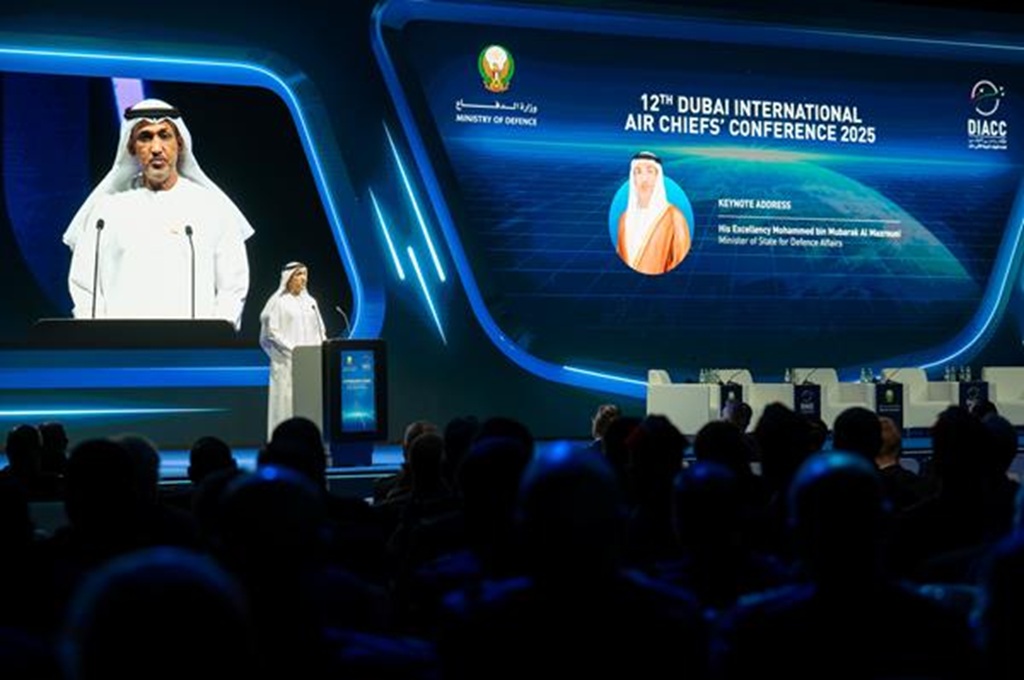
DUBAI, United Arab Emirates – Under the patronage of His Highness Sheikh Mohammed bin Rashid Al Maktoum, Vice President and Prime Minister of the UAE and Ruler of Dubai, His Excellency Mohamed bin Mubarak bin Fadhel Al Mazrouei, UAE Minister of State for Defence Affairs, opened the 12th Dubai International Air Chiefs Conference (DIACC).
The opening ceremony took place at Atlantis, The Palm in Dubai, with more than 100 official delegations from across the globe. Senior officers from the Ministry of Defence, air force leaders, chiefs of staff from partner and allied countries, as well as decision-makers and CEOs from major national, regional, and international companies, also attended. These organizations work in defense, aviation, advanced technology, space sciences, and artificial intelligence.
The UAE Ministry of Defence organized the conference in strategic partnership with ADNEC Group, under the theme “Hypersonic Edge: Re-Envisioning Airpower Across Asymmetric Spaces.”
The first session, titled “Hypersonics, UAVs, and Artificial Intelligence: Adapting Airpower to Asymmetric Battlespaces,” began with opening remarks from Joseph Guastella, Corporate Vice President and Regional Executive for Europe and the Middle East at Northrop Grumman.

This session brought together Major General Rashid Mohammed Al Shamsi, Commander of the UAE Air Force and Air Defence, General Adrian L. Spain, Commander of the US Air Combat Command, General Jérôme Bellanger, Chief of Staff of the French Air and Space Force, and Lieutenant General J.R. Speiser-Blanchet, Commander of the Royal Canadian Air Force. They spoke about how to build agile coalitions and lead through modern airpower challenges, followed by an interactive discussion with official delegations.
The second session, titled “Beyond the Atmosphere: Integrating Air and Space Capabilities for Strategic Superiority,” highlighted the growing link between air and space power.
Speakers included Major General Vincent Chusseau, Commander of the French Space Command, and His Excellency Eng. Salem Butti Al Qubaisi, Director General of the UAE Space Agency. Air Marshal Stephen Chappell, Chief of the Royal Australian Air Force, also took part, followed by Air Marshal Narmdeshwar Tiwari, Vice Chief of Air Staff of the Indian Air Force.
The third and final session, titled “The Warfighter of Tomorrow: Standards, Artificial Intelligence, and Accountability in Next-Generation Airpower,” opened with an introductory remark from Dr. Chaouki Kasmi, President of Technology and Innovation at EDGE Group.

Dr. Kasmi also moderated the session, which focused on how to prepare future air forces and their people. Major General Jonas Wickman, Commander of the Swedish Air Force, spoke about new approaches to recruitment and building the force of the future.
General Son Sug Rag, Chief of Staff of the Republic of Korea Air Force, addressed the topic “Mastering asymmetric spaces: redefining the warfighter for the future.”
Lieutenant General Antonio Conserva, Chief of the Italian Air Force, discussed “Standards under pressure: maintaining excellence in the age of automation.”
Professor Peter Hays from the Space Policy Institute at George Washington University presented a paper titled “Learning to Learn: Building Intellectual Readiness for the Future Space Battlespace.” The conference wrapped up with an official recognition ceremony for participants, followed by a group photo session.
The Dubai International Air Chiefs Conference (DIAC)
The Dubai International Air Chiefs Conference (DIAC) is a high-level event held every two years. It brings together air force commanders, senior defense officials, and aerospace specialists from across the globe. The conference is one of the leading international forums devoted entirely to air and space power.
Key Details
- Organized by: United Arab Emirates Air Force & Air Defence, in cooperation with the Dubai Airshow organizing team. DIAC usually takes place alongside, or just before, the Dubai Airshow.
- First held: 2005
- Frequency: Every odd-numbered year (2005, 2007, 2009, and so on through 2025 and beyond)
- Location: Dubai, United Arab Emirates, typically at the Al Maktoum Ballroom or a similar venue close to the Dubai Airshow site at Dubai World Central (Al Maktoum International Airport)
- Next edition: The 2025 conference is planned for 10–11 November 2025, just ahead of the Dubai Airshow 2025, which takes place from 17–21 November
Main Objectives
- Promote strategic dialogue among air chiefs on current and future air power issues.
- Share operational lessons from recent missions, such as counter-terrorism campaigns and air operations in Libya, Syria, Yemen, Ukraine, and other theaters.
- Address new technologies, including 5th and 6th generation fighters, unmanned combat aircraft, hypersonic systems, space-based capabilities, artificial intelligence, and cyber protection of air assets.
- Support international cooperation and encourage new defense and security partnerships.
- Connect industry with decision-makers, giving aerospace and defense companies direct insight into the Air Force’s needs and long-term plans.
Typical Attendees
- Air chiefs and commanders from more than 40 to 50 air forces worldwide. Recent editions have seen participation from the USAF, RAF, French Air Force, Russian Aerospace Forces, Indian Air Force, PLAAF, RSAF, Turkish Air Force, Egyptian Air Force, and many others.
- Senior officials from defense ministries and government agencies.
- CEOs and senior leaders from major aerospace and defense firms, including Lockheed Martin, Boeing, Dassault, Airbus, BAE Systems, Raytheon, Leonardo, EDGE Group, and more.
- Representatives from international bodies, such as NATO and the Gulf Cooperation Council air power coordination groups.
Format
- Day 1–2: Closed plenary sessions for air chiefs only, with classified briefings and discussions.
- Open sessions that feature keynote speeches, expert panels, and audience Q&A.
- Scheduled bilateral and multilateral meetings, along with networking receptions and side events.
- The conference often ends with a joint statement or communiqué that reflects the main themes and shared views.
Significance
- DIAC is one of the very few platforms where air chiefs from countries that may belong to rival or competing blocs, such as U.S./NATO partners and Russia or China-aligned forces, sit together and openly exchange perspectives.
- The conference has a direct impact on future procurement plans; many large defense contracts announced at or shortly after the Dubai Airshow often grow out of contacts and discussions that start at DIAC.
- The United Arab Emirates uses DIAC to highlight its role as a key global center for aerospace, defense, and advanced air power cooperation.
In simple terms, DIAC is often seen as the “Davos of air power,” a rare mix of high-level strategy talks and industry networking, held every two years in Dubai under the patronage of the UAE leadership.
Related News:
Long overshadowed by Dubai, Wizz Air will leave Abu Dhabi’s Zayed International Airport.
Asia
BPP Accelerates Growth with Portfolio Transformation into Power
BPP Accelerates Growth with Portfolio Transformation into Power+,
with THB 1,161 Million Profit in Q3/2025
BPP elevates its position as a leader in utility-scale power and integrated businesses under Banpu Group’s Power+ pillar, operating a power pure-play platform
Plans to amalgamate with Banpu Public Company Limited and partially divest 25% of the membership interests in the joint venture BKV-BPP Power LLC (BKV-BPP), with BPP’s Extraordinary General Meeting of Shareholders (E-Meeting No. 1/2026) scheduled for 29 January 2026
Delivers strong Q3/2025 performance, reporting THB 1,161 million profit, driven by power plants in China
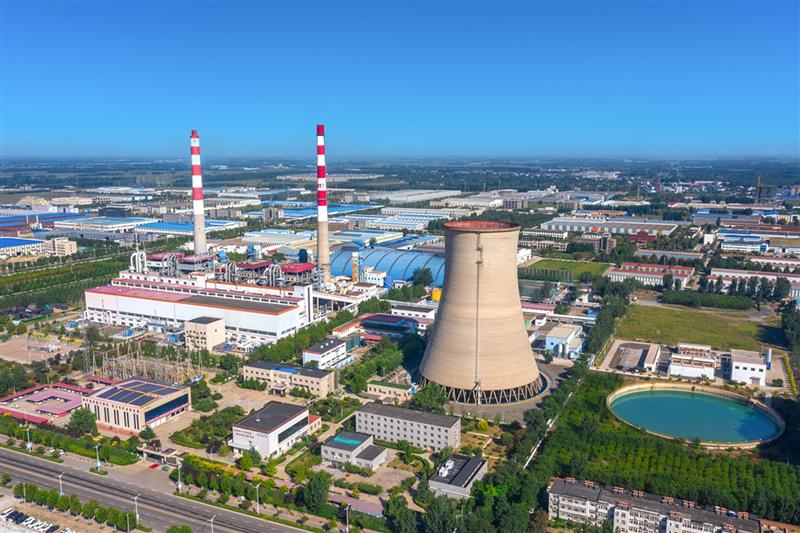
Banpu Power Public Company Limited (BPP), an international energy producer company, is preparing for a major strategic transition aimed at accelerating sustainable growth and delivering long-term value for shareholders. Although BPP continues to generate strong performance and robust cash flows from its high-quality assets across the Asia-Pacific region, the company’s share price does not yet reflect its full growth potential.
To enhance financial flexibility and strengthen its capacity for future expansion, BPP plans to amalgamate with Banpu Public Company Limited to establish a newly formed entity (“NewCo”), while partially divesting a 25% membership interest in BKV-BPP Power LLC (BKV-BPP).
These steps will elevate BPP from a regional energy producer to a leader in utility-scale power and integrated businesses under “Power+”, one of the core business pillars of Banpu Group.
This direction positions the company to capture rising global electricity demand, which is expected to grow at more than twice the rate of overall energy demand during 2025-2026[1], driven by industrial activity and digital technologies. In Q3/2025, BPP continued to deliver strong profitability from its power plants in China, underscoring the stability of its power operations and its readiness for future growth.
Mr. Issara Niropas, CEO of BPP, said, “The amalgamation marks an important milestone for BPP as we advance into Power+, a power pure-play platform that brings together BPP’s base-load power plants across Asia Pacific and the United States, encompassing thermal power plants along with certain businesses from Banpu NEXT, including renewables, battery energy storage system (BESS), and energy trading, empowering BPP to operate across the entire energy value chain.
The portfolio transformation being undertaken will enhance our financial flexibility and capital efficiency, reduce duplicative costs, and enable future large-scale investment opportunities.”
“In addition, the partial divestment of a 25% membership interest in BKV-BPP to BKV Corporation (BKV), Banpu’s subsidiary listed on the New York Stock Exchange (NYSE), will help reflect the true market value of the assets in the U.S., reinforce BPP’s financial position, unlock capital, and pave the way for new investment opportunities to support long-term growth. BPP will retain a 25% stake in the joint venture to preserve its strategic position in the U.S. market,” Mr. Issara Niropas added.
Under the proposed amalgamation, shares of NewCo will be allocated to BPP shareholders based on the preliminary share swap ratio of 1 existing BPP share to 0.74615 NewCo share. In addition, Banpu will proceed with a general offer for up to 21.34% of BPP’s total issued and outstanding shares at an offer price of THB 13.00 per share, from 1 to 23 December 2025.
Banpu will provide shareholders with details of the processes and procedures related to the general offer. The amalgamation and the partial divestment of the BKV-BPP membership interest will be presented for shareholder approval at the online Extraordinary General Meeting of Shareholders (EGM) No. 1/2026 of BPP on 29 January 2026.
In Q3/2025, BPP recorded a net profit of THB 1,161 million, a 2% year-on-year increase, and total earnings before interest, taxes, depreciation, and amortization (EBITDA) of THB 2,611 million, up 15% from the same period last year.
Key contributors included strong performance from the Shanxi Lu Guang (SLG) power plant and combined heat and power (CHP) plants in China, driven by highly efficient coal cost management. Meanwhile, the HPC power plant in Lao PDR and the BLCP power plant in Thailand operated efficiently throughout the quarter, maintaining high equivalent availability factors (EAF) of 92% and 99%, respectively.
BPP’s investment in the Jinhu Qianfeng solar farm with battery energy storage system (BESS) in China, featuring 120 MW of installed solar generation capacity and a BESS installation of 10 MW of power capacity and 20 MWh of energy storage capacity, is expected to achieve commercial operations (COD) in 2026.
Meanwhile, the company’s energy trading business in Japan sold a total of 5,325 GWh of electricity between January and September 2025, serving 1,875 customers, and has integrated AI-driven price forecasting to enhance operational efficiency and profitability.
“This strategic plan reinforces BPP’s commitment to driving sustainable regional growth while maintaining the strength of its core assets in the U.S. and China. At the same time, we continue to expand our investment portfolio across renewable energy and emerging energy technologies, aligning with Banpu Group’s long-term growth strategy and the evolving trajectory of the future energy landscape,” Mr. Issara Niropas concluded.
Learn more about BPP’s business at www.banpupower.com
[1] Electricity Mid-Year Update 2025, International Energy Agency (IEA)
About BPP
Banpu Power PCL (BPP), an international energy producer company, drives utility-scale power and integrated businesses under “Power+,” one of Banpu Group’s core business pillars, across the Asia Pacific. Operating under the concept “Pioneering Energy, Empowering Tomorrow,” BPP is committed to powering a better tomorrow with reliable energy.
For nearly three decades, BPP has been at the forefront of delivering reliable, high-quality energy that meets global standards by integrating advanced technologies with decarbonization efforts and strong corporate governance. BPP also actively supports local communities and aligns its operations with environmental goals in every country where it operates.
Related News:
Thailand Artist Wins the 2025 UOB Southeast Asian Painting of the Year Award
-

 News2 months ago
News2 months agoPeace Prize Awared to Venezuela’s María Corina Machado
-

 Politics2 months ago
Politics2 months agoFar Left Socialist Democrats Have Taken Control of the Entire Party
-

 Politics2 months ago
Politics2 months agoHistorian Victor Davis Hanson Talks on Trump’s Vision for a Safer America
-
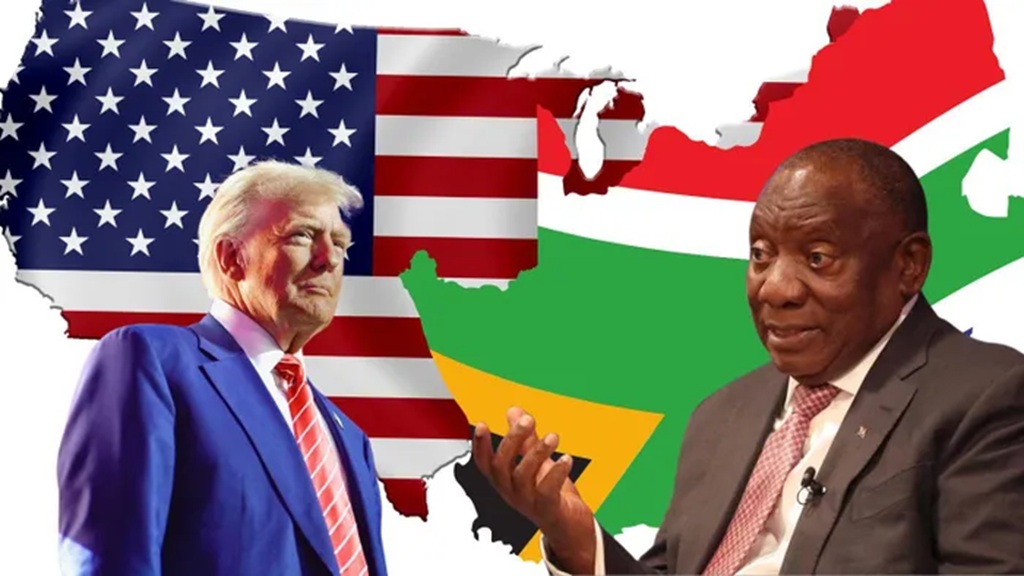
 News2 months ago
News2 months agoSouth Africa’s Audacious Bid to Teach America a Lesson
-

 Politics2 months ago
Politics2 months agoThe Democratic Party’s Leadership Vacuum Fuels Chaos and Exodus
-

 Politics2 months ago
Politics2 months agoChicago’s Mayor Puts Partisan Poison Over People’s Safety as Trump Troops Roll In
-
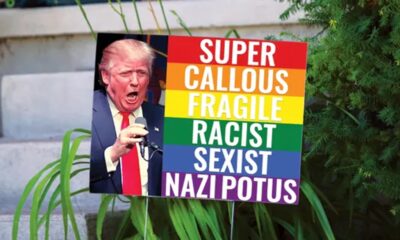
 Politics2 months ago
Politics2 months agoDemocrats Fascist and Nazi Rhetoric Just Isn’t Resognating With Voters
-

 News1 month ago
News1 month agoThe Radical Left’s Courtship of Islam is a Road to Self-Defeat














